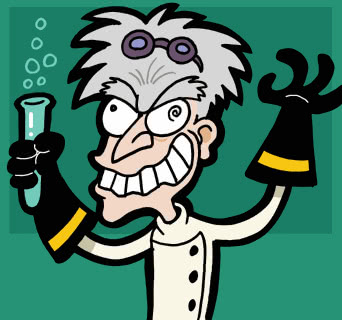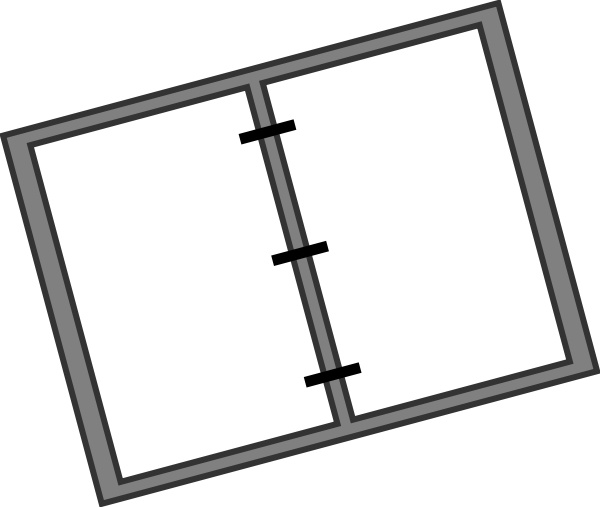The students in these courses usually have a number of learning challenges. It is unlikely most of them will be success in the Ontario Secondary School Literacy Test (OSSLT). Most of them will probably be except and will be graduating with a certificate, not a diploma. When I am looking for science resources to use with them I usually look in the grade 4 – 5 level.
Now that I am a Smarter Science convert it makes teaching these students more fun than ever! No more cookbook labs. The students are in charge of what they learn and how they learn it.
Here are a few tips:
1. Treat them with respect! This may seem self evident but I have often had students tell me that this was the first time they didn’t feel like a dummy in class. Celebrate their successes, every time! When someone reads something for you tell them “Nice reading”, when someone asks a question respond with “That’s an excellent Question, I am so glad you asked”, when someone asks an inappropriate questions say” “This is not the time for us to discuss that but thank you for putting your hand up”, when someone screws up a lab tell them “some of the best scientific discoveries have been made by scientists making mistakes, you might be looking at the Nobel prize one day”. You get the idea.

3. They must treat each other with respect! Inevitably there will be a student in the class that believes they “do not belong there”. This may be manifested overtly by call
 ing the class “retards” or more subtly by refusing to work with the other students. They have been put into your class for a very good reason so that is not a point to argue. (These may be learners with terrible attendance issues, major substance abuse problems, home lives in crisis, etc.) Instead, find a time to speak to them privately, maybe after class. Explain to them that you know they have a different aptitude than some of the other students but as long as they are in this class this is how is will be . . . . After they have been recognized by you are “not like the others” they feel better about themselves and they are able to participate in class with their dignity intact. In fact, sometimes when there is a funny question or incident occurring I will give this student a secret wink to let them know that I understand what they are also thinking. Another strategy is to ask them to be a “big buddy” for someone that needs a TA but does not have one.
ing the class “retards” or more subtly by refusing to work with the other students. They have been put into your class for a very good reason so that is not a point to argue. (These may be learners with terrible attendance issues, major substance abuse problems, home lives in crisis, etc.) Instead, find a time to speak to them privately, maybe after class. Explain to them that you know they have a different aptitude than some of the other students but as long as they are in this class this is how is will be . . . . After they have been recognized by you are “not like the others” they feel better about themselves and they are able to participate in class with their dignity intact. In fact, sometimes when there is a funny question or incident occurring I will give this student a secret wink to let them know that I understand what they are also thinking. Another strategy is to ask them to be a “big buddy” for someone that needs a TA but does not have one.4. They are “real scientists”! A real scientist has to know all about lab safety and wear their safety equipment at all times. Even if the students are simply boiling water and recording its tempera
 ture make sure they wear their goggles and tie their hair back. That is what “real scientists” must do. It’s even better if you have lab coats for you and them to wear. I only have a lab coat for myself but I ALWAYS wear it when we do labs. The kids love this! Gloves are a great idea but due to their cost I only let them wear them when absolutely necessary. Ie handling acids. By the way, simply butting vinegar into dropper bottles labeled “vinegar” for the students to work with makes them proud! Even better if you can let them react it with an unknown substance (baking soda) to create a drastic reaction!
ture make sure they wear their goggles and tie their hair back. That is what “real scientists” must do. It’s even better if you have lab coats for you and them to wear. I only have a lab coat for myself but I ALWAYS wear it when we do labs. The kids love this! Gloves are a great idea but due to their cost I only let them wear them when absolutely necessary. Ie handling acids. By the way, simply butting vinegar into dropper bottles labeled “vinegar” for the students to work with makes them proud! Even better if you can let them react it with an unknown substance (baking soda) to create a drastic reaction!5. Lab safety The most important thing for a science teacher to ensure, in any class, is the safety of the students. With most classes we simply hand out lists of rules. In order to prove that we have done our due diligence this is not acceptable with these learners. In the case of an accident a parent could quickly argue that a student with below grade level reading compression could not possible be responsible for knowing and understanding the safety rules. Furt
 hermore, those parents are right. In order to protect both the students and myself I have developed a Lab Safety Manual wherein all the lab safety rules were illustrated with simple diagrams and the students fill in the blanks (cloze activity) to write the rules out. Unfortunately, my electronic copy of this has been lost in the bowels of one of the many computers I have gone through during my teaching career but it would be a simple matter to make a new one by down loading graphics from the Internet. Depending on the technology and time available to your class you could even use a digital camera and have the kids make their own.
hermore, those parents are right. In order to protect both the students and myself I have developed a Lab Safety Manual wherein all the lab safety rules were illustrated with simple diagrams and the students fill in the blanks (cloze activity) to write the rules out. Unfortunately, my electronic copy of this has been lost in the bowels of one of the many computers I have gone through during my teaching career but it would be a simple matter to make a new one by down loading graphics from the Internet. Depending on the technology and time available to your class you could even use a digital camera and have the kids make their own.6. Structure, structure, structure! Being in a big high school with different faces in each class, at least four different teachers to contend with, moving through the crowds in the hallway, all these little things that most teenagers thrive on can be overwhelming for the learner in essential level classes. Therefore it is paramount that they know exactly what to expect in science class. By removing their anxiety you have opened the door to learning. Your structure will be determined by you and your classroom set up. Here’s what works for me:
· We keep our binders in classroom.
· Prior to their entry put a short list of what will happen in class on board. This can be super simple. For example:
o Return worksheets
o Discuss today’s weather
o Take note
o Video
o Do lab
o Clean up
A list like the one above can serve many purposes. A common question the students will ask, once they are comfortable with you will be”What are we going to do today?” to which you can reply, “It’s on the board.” Since many of the learners will have weak literacy skills they will help each other read it. This will happen naturally and there will be ad hoc discussion around what it means. Encourage this; it leads to predicting and inferring, both of which important skills for building literacy (See how easy it is to embed literacy across the curriculum!) It also allows for some social interaction which is also something these learners often struggle with. Another important skill you will be teaching by having this short list on the board is “How to use a checklist”. Incredibly this is an essential skill identified by the Conference Board of Canada as being important for employability in many jobs yet our students are unfamiliar with them. As the lesson progresses refer to the list and check things off as they are done. Try to provide the student s with a check list of their own from time to time, for example, as part of a lab procedure, etc.
allows for some social interaction which is also something these learners often struggle with. Another important skill you will be teaching by having this short list on the board is “How to use a checklist”. Incredibly this is an essential skill identified by the Conference Board of Canada as being important for employability in many jobs yet our students are unfamiliar with them. As the lesson progresses refer to the list and check things off as they are done. Try to provide the student s with a check list of their own from time to time, for example, as part of a lab procedure, etc.
· I always stand at the door to greet the students, BY NAME. For some of these lost souls their names are all they have, honour them by learning it and using it. If a student is named Timothy and only likes to be called Timothy do not call him Tim, without his permission. This year I had a student named Antonio who insisted on being called TJ, don’t argue, just do it.
· As they enter remind them to pick up their binder on the way to their desk.
· Always have the date written in the same format, on the same place on the board.
· Insist that every single piece of paper be dated and put into the binder, in order by date. This sounds so easy but is a HUGE challenge for these students. You may want to keep an ongoing list of what should be in the binder, in the correct order, posted somewhere in the classroom. Once a week go through the binders together to make sure everything is in order. They can even be taken in for marking. Why? Organization is another essential skill that these students often need to work on.
- Notes
 t out with just a couple of words for them to fill into the blanks.
t out with just a couple of words for them to fill into the blanks.Whenever you do give a note ensure it is read aloud and discussed. If the students simply copy it down they will have NO comprehension of what they have copied.
- Print Resources
Do not look for a text book to use with these courses. These students are not about textbooks.
 McGraw-Hill has published workbooks and teacher’s guides called Essentials Science 9 and Essentials Science 10. These are excellent!
McGraw-Hill has published workbooks and teacher’s guides called Essentials Science 9 and Essentials Science 10. These are excellent!
You may find the useful articles in magazines that are geared to younger learners. Two magazine I have found helpful in the past are Science World from Scholastic, each issue comes with a teacher’s guide and Yes! Science magazine.
- Video Resources
These students are not able to watch a video and answer a worksheet at the same time. If you plan to do this you will have to read the worksheet one question at a time, pause the video after each question , re-read what the questions was, rewind and show the answer again, discuss it, write it on the board for them, wait while they copy it down, read the next question, repeat. I’m sure you can see that this will become very tedious. Here’s how to make it work:
Write one question on the board, for example; “At what temperature does water boil?” Before putting someone on the spot by asking them to read the question out loud tell the class that is what you are going to do and for everyone to take a moment to read the question silently to ensure they know all the words – some of the students may use this opportunity to confer with you, a TA or each other is they are unsure of any words. Have a student read the question out. After the question has been read out loud discuss it, either all together, a think – pair – share, whatever works in your classroom. Now you are ready to show a video clip which will answer the question. After watching the video clip discuss what the answer is. Oral communication is key!
Video Clips
This is the way to go! Two minutes maximum! As you know there are a zillion on you tube. Because I do not trust our internet connection at school I always download them onto my memory stick using free software called, Clip Extractor.
Bill Nye videos
The kids love these videos, but there is too much content for them to absorb.
I like to use them to show Bill Nye, or one of his colleagues, doing a lab. Then we do the lab. Or visa versa. We do the lab then watch it on the video. This helps the students feel like “real scientists” because they see other “real scientists” doing the same thing.
Most Bill Nye videos are available on you tube. The New York Teachers website has worksheets for most of them (good for the applied level.)

- Labs
This is the most important component of the entire course. This is the “hook”! Do at least one lab activity or one demo every day! This sounds insane but for these students almost anything is a lab. Take the temperature of the cold water from the tap and the cold water from the fridge then compare it. That’s a lab. In fact, be creative! This lab could easily take up more than one 75 minute period.
I like to train the students on one or two key pieces of lab equipment and use them over and over during the course. One of my favourites is the graduated cylinder. Why, you ask? First of all, only “real scientists” use graduated cylinders. Where else do you see them? No one has one at home or in their car. Secondly, I happen to have a bunch of plastic graduated cylinders in my lab. (Glass ones can be very expensive.) Thirdly, they are easy to learn to use. I have an entire set of worksheets on “holding the meniscus” as eye level”. Always wear your goggles! Spills can happen! And finally, measuring out a fluid (I like to use water a lot!) is generally a safe part of many labs in the essentials science course.
This semester I am using the beginning scientist Smarter Science framework to help the students work collaboratively to put their thoughts in order, then design and carry out their own investigations. You can see an example of this on my past three blog postings.
Conclusion
You are a hero if you have read this far! I just have so much to tell you. Instead I will stop now. Send me any questions or comments you may have.
Also, you are welcome to come into my classroom anytime to observe and visit. Maybe we could even plan an activity where we get out classes together.
Hope this helps and GOOD LUCK!

No comments:
Post a Comment